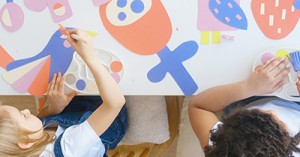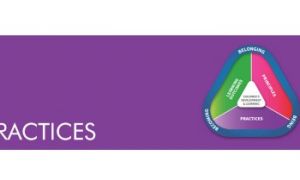The EYLF practices are more than guiding principles; they’re invitations to co-create vibrant, inclusive, and emotionally safe learning environments. Whether you're nurturing infants, engaging toddlers, or scaffolding preschoolers’ agency, these strategies help bring the EYLF to life in ways that feel authentic, responsive, and restorative.
Each practice below includes:
- A brief explanation of its purpose
- Practical strategies
- Age-specific examples
- Tips for adapting to your team and setting
Holistic, Integrated and Interconnected Approaches
What it means: Recognising that children’s learning and well-being are deeply connected across physical, emotional, social, and cognitive domains.
Strategies:
- Morning wellness check-ins: Circle time to share feelings, sleep, or weekend stories.
- Integrated routines: Combine movement (stretching, dancing) with literacy or numeracy.
- Whole-child portfolios: Document milestones across domains in one place.
Examples:
- Infants: Gentle morning greetings with touch cues and visual emotion cards.
- Toddlers: Dance-and-count sessions using scarves or beanbags.
- Preschoolers: Journals with drawings, photos, and educator notes on social-emotional growth.
Responsiveness to Children
What it means: Listening deeply and adapting to children’s interests, needs, and cues in real time.
Strategies:
- Interest wall: A living display of children’s questions and ideas.
- Rapid-response kits: Loose parts, books, and art materials ready for spontaneous exploration.
- Team huddles: Daily debriefs to share emerging interests and plan provocations.
Examples:
- Infants: Mirror play or sensory trays based on observed fascinations.
- Toddlers: Add feathers to play after noticing bird interest outdoors.
- Preschoolers: Turn a child’s drawing into a group storytelling prompt.
Play-Based Learning and Intentionality
What it means: Valuing play as central to learning, while intentionally scaffolding skills and concepts.
Strategies:
- Rotating provocations: Change open-ended materials to spark new narratives.
- Scaffold maps: Visual cues for turn-taking, sharing, or problem-solving.
- Play reflection prompts: Invite children to reflect on their play choices.
Examples:
- Infants: Peekaboo with fabric to explore object permanence.
- Toddlers: Use turn-taking tokens during block play.
- Preschoolers: Ask “What surprised you?” after dramatic play.
Learning Environments (Part 1)
What it means: Designing spaces that provoke curiosity, agency, and connection.
Strategies:
- Question banks: Cue open-ended questions during play.
- Micro-teaching slots: Short, focused skill sessions based on observations.
- Co-planned provocations: Invite children to help choose materials and goals.
Examples:
- Infants: “What do you hear?” during outdoor tummy time.
- Toddlers: 5-minute counting games using natural objects.
- Preschoolers: Co-design a science corner with magnifying glasses and bugs.
Learning Environments (Part 2)
What it means: Ensuring environments are flexible, inclusive, and emotionally safe.
Strategies:
- Zone audits: Monthly walkthroughs to assess engagement and flow.
- Flexible furniture: Lightweight, movable items for child-led reconfiguration.
- Environmental storytelling: Display children’s work and cultural artifacts at eye level.
Examples:
- Infants: Family photo mobiles above cots.
- Toddlers: Crates and cushions for pop-up reading nooks.
- Preschoolers: Children’s artwork with captions in their own words.
Cultural Responsiveness
What it means: Honouring children’s cultural identities and family knowledge.
Strategies:
- Family-led sessions: Invite community members to share stories or songs.
- Language corners: Label objects in home languages and English.
- Festival calendar: Co-create a visual timeline of cultural events.
Examples:
- Infants: Lullabies in home languages during rest time.
- Toddlers: Cooking experiences tied to cultural celebrations.
- Preschoolers: Create flags or maps representing children’s heritage.
Continuity of Learning and Transitions
What it means: Supporting smooth, emotionally secure transitions across routines and settings.
Strategies:
- Visual schedules: Photos of routines and educators.
- Transition baskets: Familiar items to carry between spaces.
- Handover journals: Quick logs for educators to share child updates.
Examples:
- Infants: Use a comfort toy during room transitions.
- Toddlers: Picture cards showing “what’s next” in the day.
- Preschoolers: Journal entries passed between educators noting interests and moods.
Assessment and Evaluation for Learning, Development and Wellbeing
What it means: Using meaningful, ongoing documentation to inform planning and celebrate growth.
Strategies:
- Micro-moment reflection kits: Pocket-sized prompts for quick notes.
- Digital portfolios: Weekly updates with photos and commentary.
- Reflective practice circles: Fortnightly team meetings to review samples and set goals.
Examples:
- Infants: Note “firsts” with photos and sensory observations.
- Toddlers: Capture social play moments and language bursts.
- Preschoolers: Invite children to choose photos for their portfolio and narrate their learning.
Next Steps: Trial, Reflect, Refine
- Choose 1–2 strategies to trial over the next fortnight.
- Sketch a simple plan:
- Who will lead?
- What materials or routines are needed?
- When will it happen?
- How will you measure success (e.g., child engagement, team feedback, family input)?
Further Reading
Practices Of The EYLF Version 2.0
Principles Of The EYLF Version 2.0
Free EYLF Version 2.0 Posters and Cheat Sheets







 Here is the list of the EYLF Learning Outcomes that you can use as a guide or reference for your documentation and planning. The EYLF
Here is the list of the EYLF Learning Outcomes that you can use as a guide or reference for your documentation and planning. The EYLF The EYLF is a guide which consists of Principles, Practices and 5 main Learning Outcomes along with each of their sub outcomes, based on identity,
The EYLF is a guide which consists of Principles, Practices and 5 main Learning Outcomes along with each of their sub outcomes, based on identity, This is a guide on How to Write a Learning Story. It provides information on What Is A Learning Story, Writing A Learning Story, Sample
This is a guide on How to Write a Learning Story. It provides information on What Is A Learning Story, Writing A Learning Story, Sample One of the most important types of documentation methods that educators needs to be familiar with are “observations”. Observations are crucial for all early childhood
One of the most important types of documentation methods that educators needs to be familiar with are “observations”. Observations are crucial for all early childhood To support children achieve learning outcomes from the EYLF Framework, the following list gives educators examples of how to promote children's learning in each individual
To support children achieve learning outcomes from the EYLF Framework, the following list gives educators examples of how to promote children's learning in each individual Reflective practice is learning from everyday situations and issues and concerns that arise which form part of our daily routine while working in an early
Reflective practice is learning from everyday situations and issues and concerns that arise which form part of our daily routine while working in an early Within Australia, Programming and Planning is reflected and supported by the Early Years Learning Framework. Educators within early childhood settings, use the EYLF to guide
Within Australia, Programming and Planning is reflected and supported by the Early Years Learning Framework. Educators within early childhood settings, use the EYLF to guide When observing children, it's important that we use a range of different observation methods from running records, learning stories to photographs and work samples. Using
When observing children, it's important that we use a range of different observation methods from running records, learning stories to photographs and work samples. Using This is a guide for educators on what to observe under each sub learning outcome from the EYLF Framework, when a child is engaged in
This is a guide for educators on what to observe under each sub learning outcome from the EYLF Framework, when a child is engaged in The Early Years Learning Framework describes the curriculum as “all the interactions, experiences, activities, routines and events, planned and unplanned, that occur in an environment
The Early Years Learning Framework describes the curriculum as “all the interactions, experiences, activities, routines and events, planned and unplanned, that occur in an environment


